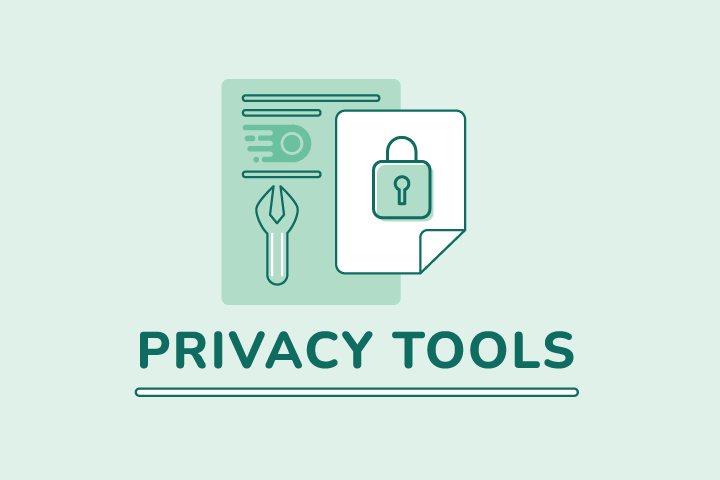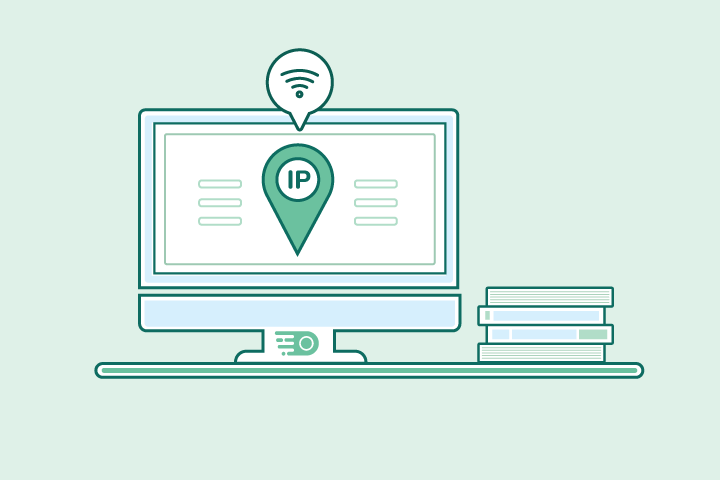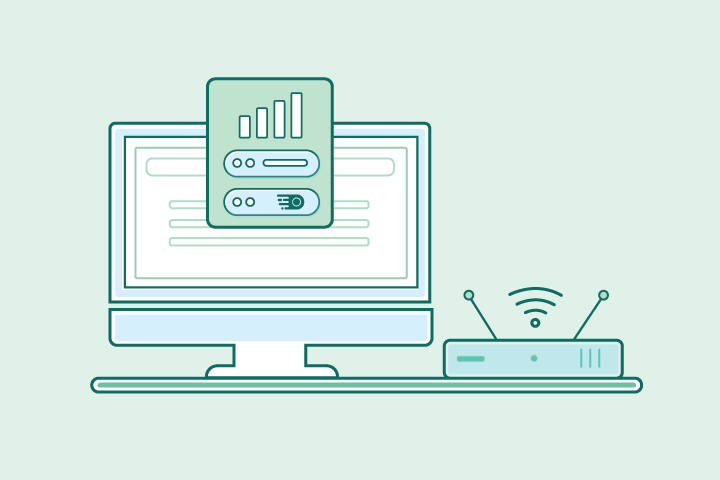Online Privacy & Security Tools [Guide]

HighSpeedOptions prides itself on providing honest, quality content. While we may be compensated when you make a purchase through links on our site, all opinions are our own. Here's how we make money.
Table of Contents
The internet has made us more connected than ever before, with smartphones providing nearly everyone with instant access to the web. However, this constant connectivity comes at the cost of privacy, as more people share sensitive information with online services, making it harder to protect personal information from online snoopers and cybercriminals.
To help you protect yourself online, we recommend adding a few security and privacy tools to your devices. Here’s an overview of the most useful online tools and services helping people safeguard their personal information.
Internet Security Suites
Where better to start than with a comprehensive suite of internet security tools? Used as an all-in-one solution, this collection of software utilities helps protect your devices from cyberattacks like malware, phishing scams, and viruses. The best internet security suites will cover all of your devices and usually come with added features like identity theft protection, password management, and parental controls. Check out a few top-rated suites below.

Norton
Norton 360 with LifeLock Ultimate Plus offers practically everything but the kitchen sink. It’s an internet security package with tons of features normally sold as standalone products, like an unlimited password manager, a Norton Secure VPN subscription, and cloud storage. On top of that, it comes with highly-rated malware protection, its own firewall, identity-theft protection, and parental controls.
To get this protection, you will have to pay a premium, but Norton justifies this with its unlimited device coverage. Whether a PC, Mac, Android, or iPhone, you can secure just about anything.

Bitdefender
Carving a spot for itself, Bitdefender throws in lots of useful extra features on top of standard security tools like malware protection and parental controls. Unlike Norton, it comes with anti-theft software for laptops, ransomware rollbacks, and a file shredder. One subscription covers up to 10 devices, and its password manager and webcam protection only work on Windows. Bitdefender is best for Apple users who care most about strong core security features.

McAfee
Trusted by millions, McAfee is an internet software company that offers a full suite of internet security tools at an affordable price. You get most of what Norton offers for less, like identity-theft protection, a password manager, and an unlimited VPN. In addition, it offers file encryption, file shredding, and coverage for up to 10 devices. A few of its features, like parental controls and its VPN, do not work with Macs, and it does not come with a hardened browser or webcam protection. Windows users will benefit most from McAfee, saving a pretty penny compared to other comparable security suites.
Virtual Private Networks
It’s true the internet is great for sharing information, but it’s not designed to protect your privacy or encrypt your data. Without online privacy tools of your own, this leaves you exposed to online snoopers and cybercriminals.
One of the easiest ways to avoid this is by using a virtual private network (VPN). A VPN essentially masks your IP address to make it harder for peeping eyes to monitor your online activities. Best of all, it’s very easy to set up and use.
There are hundreds of free and paid VPNs to choose from, but most fall short of their promises. If you want real online privacy, stick to fully-audited providers that put users first. A few worth noting are NordVPN and IPVanish. Both use AES-256 encryption to protect your data, reside in safe jurisdictions, accept cryptocurrencies as payment, and are proven to successfully mask users online.

NordVPN
NordVPN is a top-rated VPN that provides standard AES 256-bit encryption and multiple protocols like OpenVPN and WireGuard (branded as NordLynx) to secure users’ data at all times. It accepts cryptocurrency as payment, so users can checkout anonymously. And, since its headquarters are based in Panama, a jurisdiction free from data retention laws, you won’t have to worry about your provider mismanaging user logs – which they do not collect anyway.

IPVanish
IPvanish is a quality VPN that puts security and privacy first. Similar to NordVPN, IPVanish never collects users’ logs and employs AES 256-bit encryption to secure its network servers. It also runs OpenVPN/IKEv2 protocols to secure data transfers at all times. Users can customize their settings, too, with features like port selection, split tunneling, and an automatic kill switch so you get the most from your VPN subscription.
Private Web Browsers
The two most popular web browsers by a landslide are Google Chrome and Apple Safari. They offer users an effortless browsing experience and come fully integrated into Android and Apple devices. However, neither is great for online privacy.
To protect yourself while browsing, you’ll want to look for a service that offers secure add-ons, encryption, and built-in ad blockers. Some of the best web browsers for privacy include Firefox, Tor, and DuckDuckGo.

Firefox
Mozilla Firefox is a secure web browser with frequent updates and patches. While not the perfect out-of-the-box service, it offers additional browser add-ons to bolster your online privacy. Because the Mozilla Foundation is a non-profit, Firefox also has no incentive to sell any of your personal data. We recommend using Firefox for everyday web browsing.

Tor
Endorsed by Edward Snowden himself, Tor (also known as The Onion Router) is best for users in need of an extra layer of anonymity. It uses an in-house connection protocol called onion routing, which reroutes users’ data packets through three different nodes (i.e. routers). It also deploys the software extension NoScript to wipe any prior web traffic to ensure the tracks of your browsing history are covered. Since this routing technique takes longer than regular connections, it tends to slow down users’ speeds. For this reason, we only recommend using Tor for basic activities like browsing or reading online rather than streaming.

DuckDuckGo
DuckDuckGo is another great privacy tool that comes with a built-in ad-blocking feature and a private search mode. It also forces sites to reload within an HTTPS encrypted connection when available, so your data is never compromised. You can download it as its own app on a macOS, iOS, or Android device or add it to your Chrome browser as an extension.
Password Managers
According to NordPass, the most common passwords people still use today include 111111, password, and qwerty. It’s okay if you’re a part of that lineup; this article is meant for you. With cyberattacks increasing, your online accounts – be it financial, retail, or leisure – are all ripe for the taking. Hackers won’t hesitate to test your password vulnerabilities, so it’s important to safeguard your personal information at all times.
Like VPNs, many password management services promise you the world, yet end up delivering the bare minimum in practice. Of the hundreds available today, we only recommend a few password managers to secure your logins including Bitwarden and NordPass. As privacy tools go, these are plug-and-play services that run themselves in the background for the most part.

Bitwarden
Known for its airtight security and capable free tier, Bitwarden is an open-source password manager with no-knowledge architecture, AES-256 encryption, multiple authentications (2FA and U2F). Users can easily transfer their passwords over with ease, and it’s available for desktop, all browsers, Android, and iOS.

NordPass
NordPass is NordVPN’s password manager, and it packs a lot into a simplified service. While it’s not open-source, NordPass utilizes much of the same security measures that BitWarden does including AES encryption and multi-factor authentication (MFA) methods like biometric logins and physical keys. It also runs on a zero-knowledge architecture, so not even it knows what you store in your account.
Private Email Services
While some may quip that “email is dead,” it’s very much alive. It’s used for a host of internet activities like communications, marketing, and data storage. Depending on which email service you use, your data could be compromised in more ways than you can count.
For example, did you know that Gmail allows third-party services to peep through your emails in order to serve you targeted ads? Moreover, Google uses its own ecosystem of “free” services to collect copious amounts of data on you. In addition to Big Tech monitoring, hackers can also intercept and access your private messages. So, any confidential information you send using a non-encrypted email (i.e. passwords or addresses) is vulnerable to cyber-attacks.
If you want to avoid this type of privacy breach, you need a secure email provider. Of all privacy tools, this probably houses most of your sensitive information. The most reputable email services we recommend are ProtonMail and Tutanota.

ProtonMail
ProtonMail is based in Switzerland and offers both free and paid subscriptions. This email service comes with security features such as end-to-end encryption, anti-phishing, anti-spam, two-factor authentication, and accessibility via the Tor Network. They cannot decrypt your emails and therefore keep your data safe from online snoopers and dangerous cyber threats.

Tutanota
Tutanota is based in Germany and utilizes symmetric and asymmetric encryption technology to secure messages. It encrypts emails end-to-end when both parties are active Tutanota users. Otherwise, it allows users to send password-protected emails to non-Tutanota recipients. It also offers a variety of native apps for desktop and mobile that easily integrate into users’ workflows.
Data Leak Tests
Many times, users suffer cyberattacks due to data leaks. Also known as a data breach, a data leak is the accidental release of confidential or protected information to an untrusted party. These leaks can include IP address leaks, DNS leaks, WebRTC leaks, and torrent leaks – among others.
In addition to default features like HTTPS encrypted connections and multi-factor authentication logins, the privacy tools we listed above are intended to protect users from exactly these kinds of slips. However, not all tools are as secure as they promise and hackers tend to pick on the lowest-hanging fruit.
If you suspect that a device(s) or online account experienced a data leak, here are a few privacy tools you can use to check for device vulnerabilities.

IP/DNS Leak Test
If you ever want to check your device for any IP/DNS/WebRTC leaks, we recommend visiting IPleak.net. It’s a free resource powered by AirVPN that detects data leaks on your devices. You can enter your IP address or a domain name into its search bar, and it will generate a report outlining any data leaks it detects.

HaveIBeenPwned
HaveIBeenPwned is a free resource that allows users to quickly and easily assess if they are potentially at risk due to any of their online accounts being compromised, or “pwned,” in a data breach. When a user types in their phone number or email address, the site cross-references it with current breach databases to see if they come up. If you ever suspect that an account of yours has been hacked or compromised in any way, this is a good tool to set the record straight.
The internet has a funny way of making the world feel smaller, but never forget that your data doesn’t have to be a part of that shrinking process. No amount of convenience should diminish the importance of your personal safety – on or offline. Pick a few security and privacy tools today to help protect yourself online.
Find providers in your area

Table of Contents





